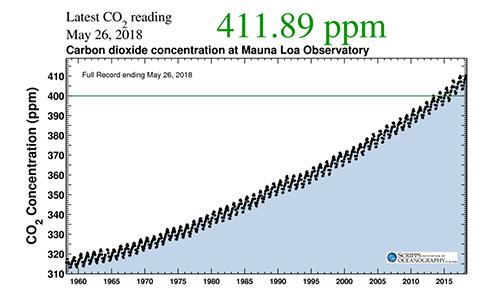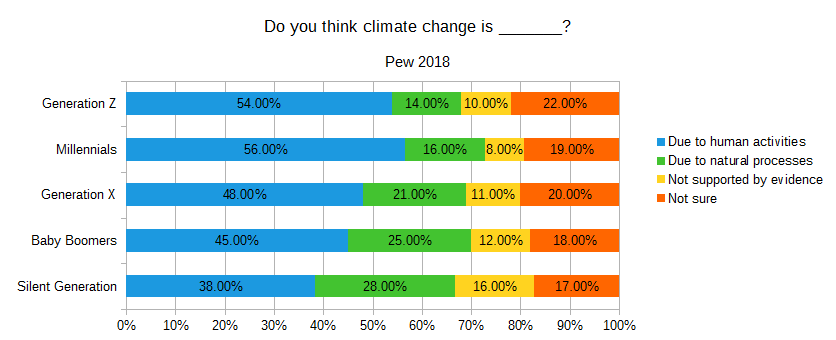
Unaltered photo by Joseph Cesare via Wikimedia Commons, Share Alike 3.0.
Language is a tool that helps us make sense of the world and locate our values and goals in relation to societal power structures. A “text” that has these qualities may be read, seen, or heard, including landscapes, songs, and oral narrative traditions; that is, a text is anything that one can “read” or interpret in a social context. Socio-environmental scientists may often prefer numerical, statistical, and iterative modeling methods, but the integration of qualitative measures adds individual perspective and emotion, and it can reveal unequal power relations among stakeholders in ways quantitative data cannot. Qualitative methods can trace how individuals and groups form their identities, as well as how they make sense of and value their socio-environmental situations, and these methods can reveal submerged power relations. One can apply qualitative measurement across local, regional, or global scales, revealing retrospective patterns and prospective possibilities. This lesson, which in full requires three, 75-minute class sessions, develops students’ ability to apply qualitative methods to navigate complex socio-environmental dynamics in climate change knowledge and enrich their work with a diversity of human perspectives.
- Learn the distinction between quantitative and qualitative measurement.
- Explore ways that narrative, emotion, and identity play crucial roles in socio-environmental perspectives.
- Collaborate to achieve an in-depth understanding of three key climate change perspectives: 1) alarmed, 2) uncommitted, and 3) dismissive.
- Conduct interviews and synthesize qualitative findings with actionable rhetoric to provide compelling climate messages to each of the three key belief groups.
- Integrate the humanities, rhetoric, sociology, and psychology into a solutions-based climate path forward that complements the natural sciences.
- For 5 minutes, have students contemplate and discuss in small groups these two climate change graphs. The first graph is quantitative; the second reflects narrative beliefs in its anthropogenic origins based on the question, “Do you think climate change is ________?”
- Ask the whole class to list factors that influence the interpretation of factual data (Keeling Curve) through a subjective, skeptical, or defensive lens. Many factors relate to one’s identity, like age (generation), gender, class, race, political alliance, sexuality, and region (rural vs. urban).
- End this hook by having students suggest ways that stories, culture, and personal experience affect an individual’s belief in facts. Ask for anecdotes from their families and friends.


Compelling Climate Narratives for Diverse Populations (Three, 75-min class sessions, 1 interview)
- Class Session 1: (Steps 1–6)
- Class Session 2: (Steps 7–8)
- Class Session 3: (Steps 9–11)
-
Give the students two reading assignments to have completed prior to class:
Preiser, R., García, M., Hill, L., & Klein, L. (2022). Qualitative content analysis [excerpts]. In: R. Biggs, A. de Vos, R. Preiser, H. Clements, K. Maciejewski, & M. Schlüter (Eds.), The Routledge Handbook of Research Methods for Social-Ecological Systems (pp. 270-271). Taylor & Francis.
https://doi.org/10.4324/9781003021339-23DocumentHine, D.W., Phillips, W.J., Cooksey, R., Reser, J.P., Nunn, P., Marks, A.D.G., Loi, N.M., & Watt, S.E. (2016). Preaching to different choirs: How to motivate dismissive, uncommitted, and alarmed audiences to adapt to climate change? Global Environmental Change, 36, 1-11.
https://doi.org/10.1016/j.gloenvcha.2015.11.002Document
-
After using the Hook, review the two reading assignments by summing up the major insights about 1) the value of qualitative methods and ways they can complement quantitative methods, and 2) audience segmentation and the power of narrative to persuade.
-
Assign each student to one of three belief groups from the Hine article on climate change: alarmed, uncommitted, or dismissive. First, have each group sketch a profile of a “typical” member of the group. For example, alarmed individuals are more likely to be young, liberal, and female; dismissive individuals are more likely to be older, conservative, and male. Though assigning identity categories to beliefs runs the risk of essentializing or stigmatizing certain identities, correlations between identity and belief are key factors in effective climate change communication.
-
Have each group review the above background reading on how their assigned target audience receives and reacts to climate change information. Each group should draw up a list of the most and least effective ways to engage their audience based on these biases and preferences. Give each group 5 minutes to present their advice for engaging their target audience.
-
As a whole class, note (perhaps by drawing a Venn diagram) the modes of persuasion that are variably effective for each of the three population sub-groups: mention of “climate change,” adaptation advice, use of emotion, personal and collective responsibility, financial impacts, and local impacts.
-
End this class session by having each group identify three real individuals among the group’s family and friends who fit into their category: alarmed, uncommitted, or dismissive. The group’s homework is to request interviews with these people and schedule them, then draw up a series of questions to ask and record in an audio file. Ideas for interview questions include:
- What do you think climate change is?
- How does climate change relate to the things we do in our daily lives?
- What emotions do you feel when thinking about climate change?
- Have you seen any changes in your local environment in the course of your life?
- Do you think that investment in green technology and adaptation is money well spent?
- What policy or infrastructure changes would you like to see implemented?
- What gives you hope that we will leave a better home for our grandchildren?
-
In the next class after the interviews, reconvene the groups so they can process the qualitative information gleaned in the interviews. Each group should draw up a summary of:
- Identities of the people they interviewed (demographic info only, not names)
- Keywords, phrases, themes, and narrative parallels of interest, extracted from the audio recording
- Synthesis of how the interviewer perceived that the interviewee’s identity or political stance affected their perspective on climate change.
Conducting this three-part analysis across three interviews will take the whole class period; the instructor should circulate to assist groups in their synthesis.
-
As homework, have each group prepare a class presentation (~10 min) on their findings. They should draw out threads and themes that resonated across the three interviews. They might compare categorical expectations with actual findings (n=3) and note surprises. They should analyze the ways that climate change communication seems to be effective or not within their category, and they should provide ideas for how to craft a persuasive climate change narrative for their category.
-
In the final class session, review the three class presentations (~30 minutes). Be sure to enjoy the surprises and serendipities that can come from human conversation; for example, if a diesel-loving grandpa was able to envision a future of solar and wind energy as a good thing; or if a young environmentalist just can’t imagine her life without shopping at the mall. Humans are emotional and irrational creatures who form heavy attachments to material objects and the lifestyles put on display by owning things, and we use mechanisms of defensiveness, projection, and prejudicial bias to reduce cognitive dissonance caused by climate change. Discuss.
-
Finish the lesson by having each group sketch the outline (major rhetorical points) of a short strategic climate change narrative tailored to people in their category: alarmed, uncommitted, or dismissive.
-
As an option, the instructor could have each group compose their strategic narrative and share it with the interviewees as well as the class. It might be interesting to explore the overlaps and gaps between the three strategic narratives and to brainstorm a unified strategic narrative that is addressed to all Americans, or even all humans. Because climate change is so difficult and divisive, and the American lifestyle is disproportionately carbon-intensive, a speech from a fictional “President Next” addressing Americans (or the Global North) is probably the limit of what audience-tailored rhetoric can achieve.
-
Collaborating with qualitative researchers to co-design social-ecological studies
This highly accessible article argues that ecologists should be embracing the use of qualitative data. It describes types of qualitative information, why it is useful, and how it enriches research and understanding. It conveys information in the context of adopting mixed methods—combining qualitative and quantitative information—and it provides overviews of study designs.
Keith, R.J., Given, L.M., Martin, J.M. et al. (2022). Collaborating with qualitative researchers to co‐design social‐ecological studies. Austral Ecology, 47(4), 880-888. https://doi.org/10.1111/aec.13172
-
Qualitative data sharing and re-use for socio-environmental systems research: A synthesis of opportunities, challenges, resources and approaches
While this report focuses extensively on the challenges and value of sharing qualitative data, it provides a very brief overview of the value of such data and has a nice section specifically on the role of qualitative data in sustainability of socio-environmental research. The reason sharing is a focus is that there are currently few widely used portals/services for archiving and sharing data in narrative form but particularly in video, audio, and web forms, etc. (i.e., highly unstructured data).
Jones, K., & Alexander, S.M., et al. (2018). Qualitative data sharing and re-use for socio-environmental systems research: A synthesis of opportunities, challenges, resources and approaches [White Paper]. SESYNC. https://doi.org/10.13016/M2WH2DG59
-
Sociological research methods in brief
This clip from a SESYNC Immersion lecture (~ 25 min) by Dr. Jorgenson briefly introduces methods sociologists bring to the study of human-environment problems. It includes examples of qualitative research approaches, including ethnography and case study methodologies, and quantitative research approaches, overviewing multivariate regression and other techniques.
Jorgenson, A. (2022, April 18). Sociological research methods in brief. SESYNC. https://www.sesync.org/resources/sociological-methods-brief